Coronavirus Live News and Updates – The New York Times
Coronavirus Live News and Updates The New York Times
World|Coronavirus Live Updates: Trump at Odds With C.D.C. Over Safety Precautions to Open Schools
Advertisement
July 8, 2020, 11:26 a.m. ET
Amid a push to reopen schools, a Trump administration directive would require in-person classes. Brooks Brothers, the clothier that traces its roots to 1818, filed for bankruptcy.
Right Now
New York City’s public school system, the largest in the U.S., will not fully reopen in September, with classroom attendance limited to only one to three days a week, the mayor said.
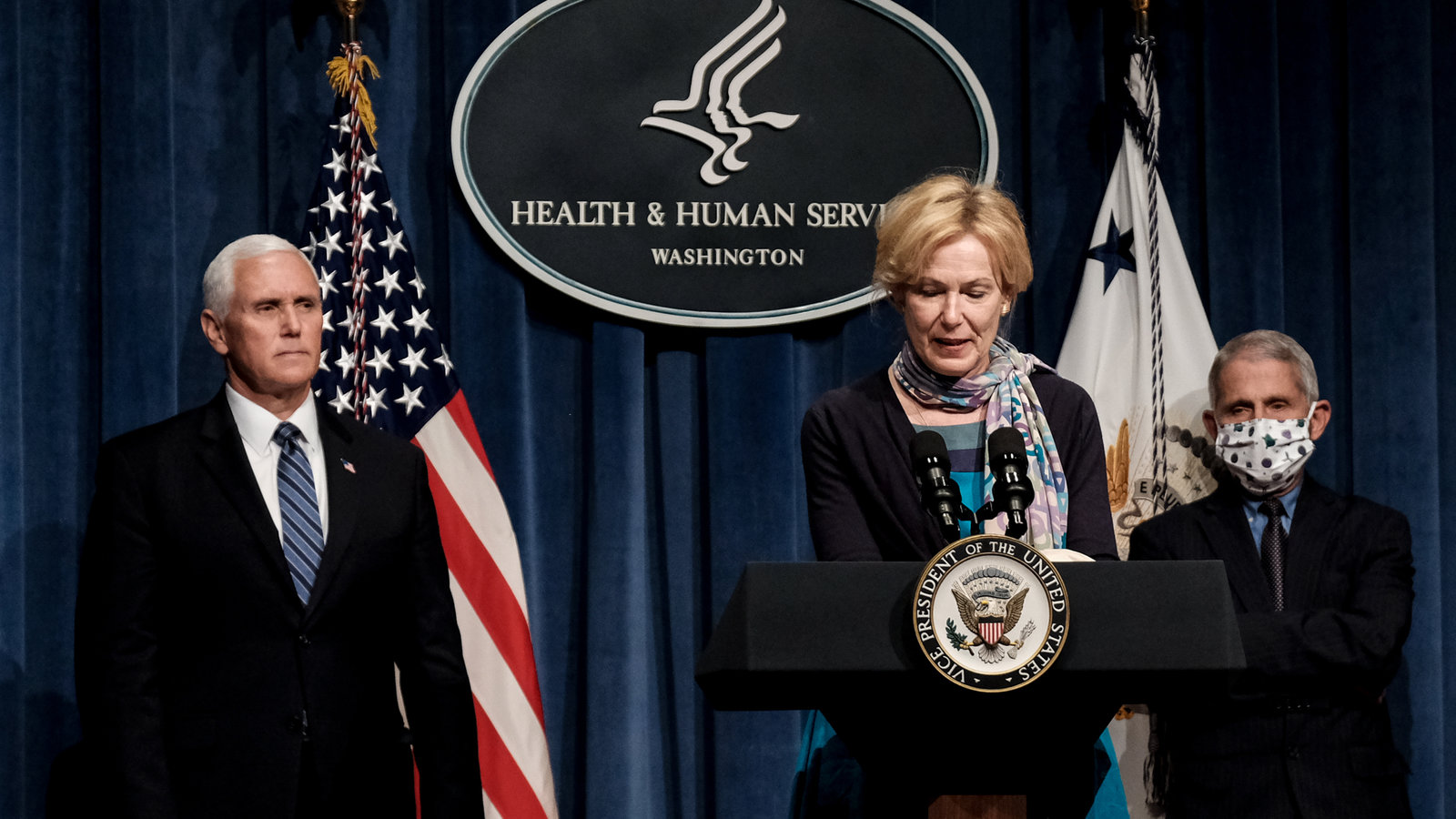
Here’s what you need to know:
- Trump denounces the C.D.C. over guidelines for opening schools and threatens funding.
- N.Y.C. released its schools plan: Up to 3 days a week in the classroom.
- The pandemic is Puerto Rico’s 5th dire emergency in 3 years and is one of the hardest-hit parts of the U.S.
- Harvard and M.I.T. sue over the Trump administration’s plan to require in-person classes for foreign students.
- ‘Testing alone is almost never the answer’: One state’s struggle to contain the pandemic.
- Brooks Brothers, founded in 1818, files for bankruptcy.
- As a heat wave hits the U.S., officials struggle to balance competing health concerns.
Trump denounces the C.D.C. over guidelines for opening schools and threatens funding.
President Trump, openly flouting the advice of his own federal health experts, threatened to cut off federal aid to schools that refuse to fully reopen this fall.
He assailed guidelines issued by the Centers for Disease Control and Prevention that recommend a slew of costly preventive measures necessary to bring the nation’s children back to class.
In a pair of tweets on Wednesday morning, Mr. Trump ramped up pressure on state leaders to get children back in brick and mortar buildings, a crucial step to jump-starting the economy.
Mr. Trump has no control over the vast majority of school district budgets, which are raised by local property and sales taxes. And he has little control over federal funding already appropriated by Congress. But the Education Department can withhold emergency relief funding that school districts say they desperately need to fund staff, programming and the public health measures recommended by the C.D.C.
“I disagree with@CDCgov on their very tough & expensive guidelines for opening schools. While they want them open, they are asking schools to do very impractical things. I will be meeting with them!!!” Mr. Trump wrote.
The threat comes as scientists grapple with rising concerns about transmission of the coronavirus in indoor spaces. Most public schools are poorly ventilated and don’t have the funding to update their filtration systems. Mounting evidence suggests that in crowded indoor settings, like schools, tiny droplets expelled when an infected person breathes, talks or sings can linger and infect others when inhaled. Children under 12 — who may do all of those things with force — are thought to have only a low risk of getting sick themselves, but they may still spread the virus to other students, or to teachers and parents.
Mr. Trump also tweeted that he believed that schools’ hesitance to reopen was politically motivated, invoking European countries that have already reopened their schools. Experts say several countries, like Germany, reopened their schools after getting the spread of the virus under control. Most countries also implemented virus-control steps in the schools, including mask-wearing, reduced class sizes, and keeping children in small groups at recess and lunchtime.
In much of the United States, virus infections are soaring and patients are quickly filling up hospital beds. Some cities and areas, in response to surging cases, have slowed reopening or imposed new antivirus precautions.
“In Germany, Denmark, Norway, Sweden and many other countries, SCHOOLS ARE OPEN WITH NO PROBLEMS. The Dems think it would be bad for them politically if U.S. schools open before the November Election, but is important for the children & families. May cut off funding if not open!” he wrote.
Contrary to one claim in Mr. Trump’s tweet, there have been problems in some schools in Sweden, which never closed its schools or implemented many restrictions in the rest of its society. Sweden has seen the death of a teacher at one school and at least two staff members at other schools.
But Mr. Trump’s funding threat carries real weight. When it passed its $2 trillion coronavirus stimulus law, Congress gave enormous latitude to Education Secretary Betsy DeVos to decide how to parcel out tens of millions of dollars in relief to school districts. Ms. DeVos said Tuesday that only 1 percent of the $13.5 billion in stimulus funding allocated to K-12 school districts had been claimed. And the Education Department doles out billions in funding to states for a range of programs funded in the federal budget, including those that serve low-income and special education students.
Those districts are now desperate for funds as they try to find ways to open classrooms with far fewer students and staff in each, to maintain social distancing, to test students and staff for the coronavirus, and to provide masks and other protective gear. Education groups have estimated that they need at least $200 billion in additional funding to reopen next school year.
N.Y.C. released its schools plan: Up to 3 days a week in the classroom.
transcript
0:00/1:37
-0:00
transcript
‘Health and Safety First’: De Blasio Unveils School Reopening Plans
Mayor Bill de Blasio said classroom attendance in New York City will be limited to only one to three days a week as a way to slow the spread of coronavirus.
-
One-point-one million kids, millions of parents and family members, who want to see their kids educated the best way possible. And that means in-person learning. Of course, everyone, everyone is focused on health and safety first. Seventy-five percent of our parents said they want their kids back in the school buildings getting the very best education. And we need to listen to the voices of our parents as we plan, as we prepare, as we think about what they’re saying about the people they know best — their own children — but also what they’re saying about their own lives. So many New Yorkers desperately need to get back to work. For a lot of people, that means they have to get back to a workplace. Here’s the deal: For the vast majority of kids and the vast majority of schools, you’ll be going to school, to the classroom, either two days a week or three days a week, depending on the week. Again, certain other schools will have exceptional dynamics. We can talk about that as well. But for the vast majority of kids, a typical week — two or three days in the classroom, in the school. The other days remote learning. Of course, we understand some families will choose remote learning as the only option. The chancellor will speak to that. And they have every right to do that. And we’ll be ready. But basically this blended model, this kind of split schedule model, is what we can do under current conditions. And then let’s hope and pray science helps us out with a vaccine, with a cure, treatment, the things that will allow us to go farther.
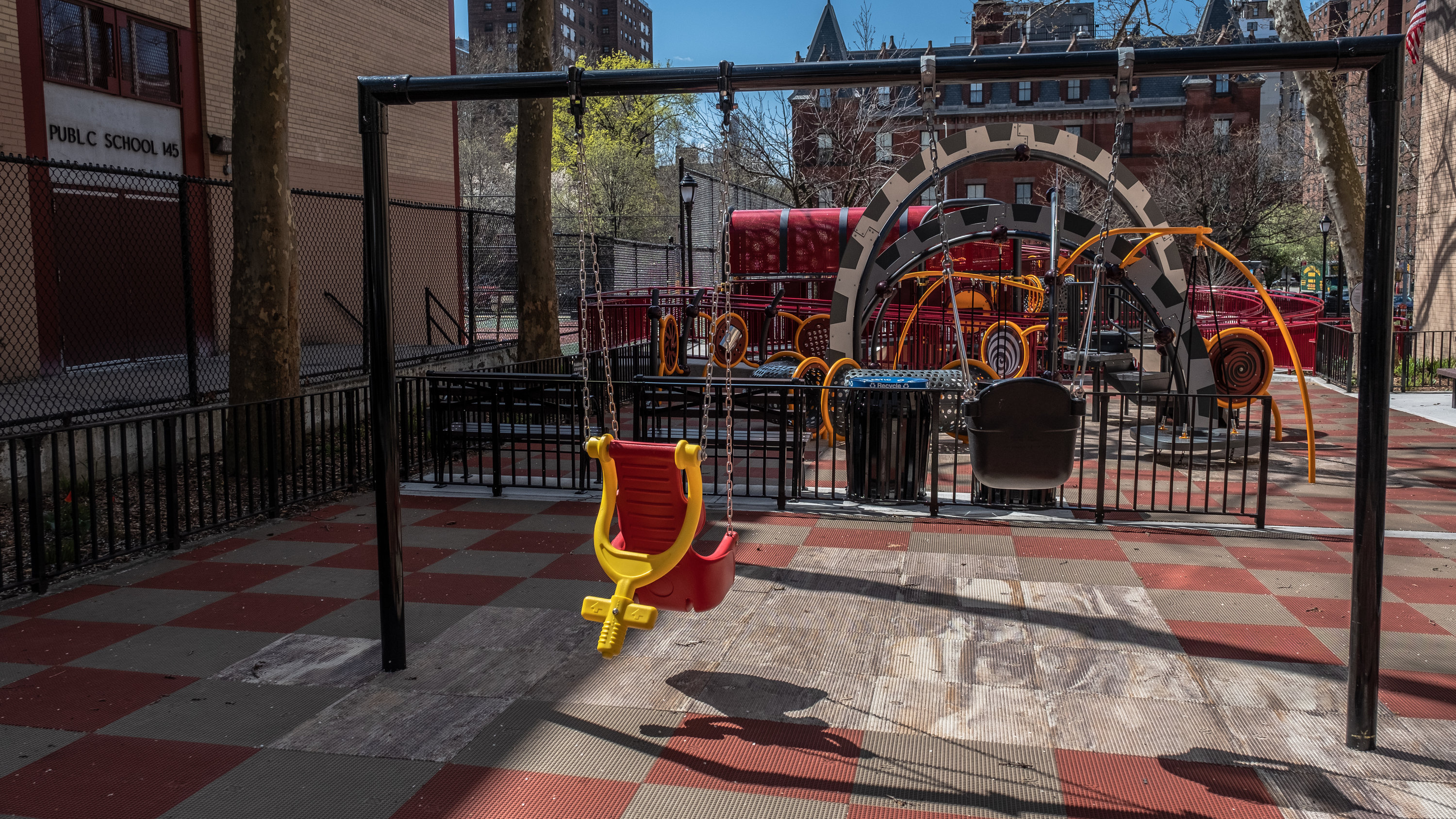
Classroom attendance in New York City will be limited to only one to three days a week in an effort to continue to curb the coronavirus outbreak, Mayor Bill de Blasio said on Wednesday, about four months after 1.1 million New York City children were forced into online learning.
Mr. de Blasio’s announcement of his plan for the system, the largest in the U.S., capped weeks of intense debate among elected officials, educators and public health experts.
The decision to opt for a partial reopening, which is the only way to accommodate students in school buildings while maintaining social distancing, may hinder the ability of hundreds of thousands of parents to return to their pre-pandemic work lives, undermining the recovery of the sputtering local economy.
Under the mayor’s plan, there will probably be no more than a dozen people in a classroom at a time, including teachers. The typical class size in New York City schools can hover around 30 children.
Still, like New York City’s, many school districts around the country are planning on not reopening fully, and instead will use a mix of in-person and remote learning indefinitely. In New York, Gov. Andrew M. Cuomo has authority over when schools across the state, including in New York City, can reopen. Mr. Cuomo and Mr. de Blasio have long feuded over schools, and Mr. Cuomo could still halt the mayor’s timeline for reopening.
The pandemic is Puerto Rico’s 5th dire emergency in 3 years and is one of the hardest-hit parts of the U.S.
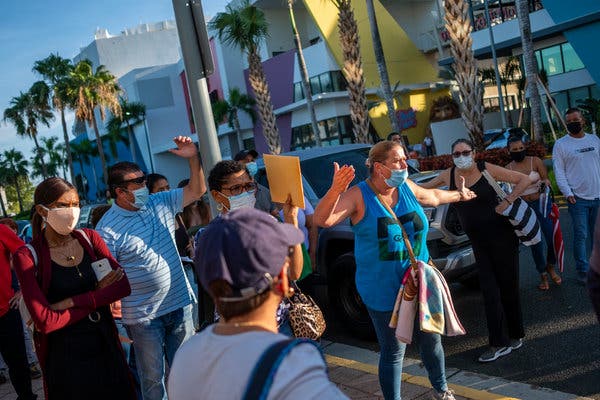
Puerto Rico’s governor, Wanda Vázquez, was the first in the United States to order businesses to close and people to stay home on response to the coronavirus. Experts say her quick action helped stave off a potentially worse medical crisis on the island. Nonetheless, the pandemic has created Puerto Rico’s fifth dire emergency in three years, making the island one of the hardest-hit parts of the country.
Thanks largely to reconstruction after Hurricane Maria in 2017, Puerto Rico’s economy had been inching toward recovery after the devastating storm and the bankruptcy of the island’s government the same year. A civic uprising paralyzed the island last summer and led to the ouster of Ms. Vázquez’s predecessor. Then a series of earthquakes shook the south side of the island in January.
Now, despite federal guidance that people should wash their hands frequently during the pandemic, the governor has announced that because of a severe drought, parts of the island will have running water only every other day for the foreseeable future.
At least 300,000 Puerto Ricans — out of a civilian labor force of 1.05 million — have filed unemployment claims linked to the pandemic, and many others are ineligible for aid because they are part of the island’s large informal economy. In mid-June, the island had the highest insured unemployment rate in the country, according to the U.S. Department of Labor.
Harvard and M.I.T. sue over the Trump administration’s plan to require in-person classes for foreign students.
Harvard University and the Massachusetts Institute of Technology sued the Trump administration in federal court on Wednesday, seeking to block a directive that would strip foreign college students of their visas if their coursework was entirely online.
The universities argued that the policy, announced on Monday, was politically motivated and would throw higher education into chaos. It was widely seen as an effort by the White House to pressure universities into reopening and abandoning the cautious approaches that many have announced they would adopt to reduce Covid-19 transmission.
Harvard is planning to teach its classes entirely online, and many other universities are planning a hybrid model, with some in-person instruction but mostly online classes. Harvard’s president, Lawrence S. Bacow, called the administration’s action cruel and reckless and said in a statement that it appeared to have been designed to pressure universities to hold in-person classes “without regard to concerns for the health and safety of students, instructors and others.”
The two universities said that the new directive would prevent many of Harvard’s 5,000 international students — and hundreds of thousands of students at other universities across the country — from staying in the United States. Their suit, filed in federal court in Boston, seeks a temporary restraining order preventing the government from enforcing the policy because it violates the Administrative Procedures Act.
The suit says that the government recognized that the pandemic posed a unique crisis on March 13, when it suspended a rule that students in the country on F-1 visas must attend most classes in person. “The government made clear that this arrangement was in effect for the duration of the emergency,” the lawsuit says.
In reversing that earlier guidance on Monday, the universities say, the government has put the ability of international students to continue studying and working in the U.S. in jeopardy, and it has disrupted the careful planning process that many universities have used to restart higher education in the fall, after shutting down campuses in mid-March.
“The effect — and perhaps even the goal — is to create as much chaos for universities and international students as possible,” according to the lawsuit.
Kenneth T. Cuccinelli II, the acting deputy secretary of the Department of Homeland Security, defended the administration’s order in an interview Tuesday on CNN, saying that the agency was providing more flexibility for international students than in the past, when they could take only one online course to qualify for visas. Now they can take more, as long as at least some of their instruction is in person.
“If they’re not going to be a student or they’re going to be 100 percent online, then they don’t have a basis to be here,” Mr. Cuccinelli said, adding, “They should go home, and then they can return when the school opens.”
‘Testing alone is almost never the answer’: One state’s struggle to contain the pandemic.
As in much of the South and West, Tennessee is awash in confirmed cases, and testing has proved no match for the coronavirus once it overwhelms local governments’ abilities to trace an infected person’s contacts and forces those who were exposed to self-quarantine.
Tennessee is far from the only state to discover that despite President Trump’s hype — he boasted on Monday on Twitter: “our great testing program continues to lead the World, by FAR!” — coronavirus testing is not a miracle path to a safe reopening.
In a state where 132 of every 1,000 people have been tested, daily confirmed infections nearly quadrupled between early June and early July, though they have dropped somewhat in recent days. The positivity rate shot up to nearly 8 percent from 5 percent. Last week, the mayor of Nashville, Tennessee’s largest city, rolled back its reopening.
There are some obvious explanations for Tennessee’s travails, writes our Washington correspondent Sheryl Gay Stolberg. The state was among the first to reopen its economy, and many people abandoned social distancing and masks. A country music star, Chase Rice, performed in late June in front of 1,000 people — most not wearing masks — at an outdoor venue in eastern Tennessee and was eventually shamed into delivering what critics called a non-apology.
Young people jammed into Nashville’s famed honky-tonks and bars, and Dr. Alex Jahangir, the chairman of Nashville’s Board of Health and the leader of the city’s coronavirus task force, said the biggest growth in cases in the city had been among people ages 25 to 34. In a city whose economy thrives on music and drinking, tensions have erupted between businesspeople and public health officials.
Experts acknowledge that testing is not a panacea. Adm. Brett P. Giroir, the assistant secretary of health, sounded a note of caution on Tuesday, warning that testing without other public health interventions would be of little use.
“We cannot test our way out of this,” he told reporters, adding, “testing alone is almost never the answer.”
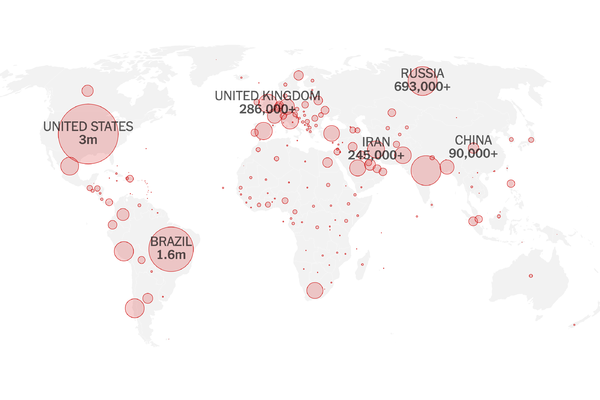
Coronavirus Map: Tracking the Global Outbreak
The virus has infected more than 11 million people and has been detected in nearly every country.
Brooks Brothers, founded in 1818, files for bankruptcy.
Brooks Brothers, the clothier that traces its roots to 1818, filed for bankruptcy on Wednesday, as the brand buckled under the pressure from the coronavirus pandemic following years of declining sales as customers embraced more casual apparel and sales shifted online.
The company, founded and based in New York, filed for Chapter 11 restructuring proceedings in the U.S. Bankruptcy Court for the District of Delaware. Claudio del Vecchio, the Italian industrialist who bought the brand in 2001, told The New York Times in a May interview that he would not rule out Chapter 11 as a possibility for the company.
Brooks Brothers, the oldest apparel brand in continuous operation in the United States, which has dressed all but four U.S. presidents, said earlier this year that it planned to close its three U.S. factories.
The company is the latest retailer to file for bankruptcy since the pandemic forced widespread store closures and pushed the economy into a deep recession, among them the department store chains Neiman Marcus and J.C. Penney, as well as clothier J. Crew.
U.S. ROUNDUP
As a heat wave hits the U.S., officials struggle to balance competing health concerns.
With temperatures and virus cases rising simultaneously this week, cities in the Midwest were trying to reduce the potential for overheating without putting people at risk of catching the virus while indoors.
In Chicago, where temperatures were hovering around 90 degrees, splash pads were temporarily reopened in parks, but with employees on hand to make sure people kept their distance. In Fort Wayne, Ind., a cooling site at a botanical conservatory was limited to five people because of social distancing needs. In Detroit, recreation centers were opened for residents to cool off, but with occupancy limits lowered and temperature screenings instituted. And in nearby Washtenaw County, Mich., officials opened two centers on Monday as temperatures surged into the 90s.
“We know that Covid-19 has significantly reduced the number of public buildings available to people seeking relief from the heat this summer, “ said Gregory Dill, the county administrator in Washtenaw County, Mich. “Public libraries, churches, community centers and other places that usually address this need aren’t open to the public due to the virus.”
In Aurora, Ill., many of the usual cooling stations remain closed because of the pandemic. Officials opened a transit center — with social distancing and masks — as another option for residents to get out of the heat.
“We certainly have learned how to pivot quickly during these challenging times,” said the city’s mayor, Richard C. Irvin.
Elsewhere in the U.S.:
-
New Jersey’s governor said on MSNBC on Wednesday that he would sign an executive order requiring face coverings outdoors when social distancing is not possible. Since early April, masks have been required indoors at businesses. When asked if people would receive tickets for disobeying the rules on a Jersey Shore boardwalk, he said it was not likely. “If you are there by yourself or with your family, the answer is no,” he said. “But if you’re congregating with a lot of other folks and there’s no social distancing, you’re going to at least get a warning, if not something stronger.”
-
A 35-year-old California woman has sued her former employer, Hub International, a global insurance brokerage firm, saying that she was fired because her young children were making noise during business calls while she was working from home. She is accusing the company of gender discrimination, retaliation and wrongful termination.
-
Young people in the U.S. are more likely to pack their bags because of the pandemic than members of other age groups, according to a Pew Research Center study. Family was a major factor in people’s decisions; most of those who relocated said they had moved in with relatives. The data also highlighted racial differences in relocation trends.
Virus-tracking apps are rife with security and privacy risks. Now some governments are backtracking.
Many countries rushed out apps to trace and monitor the coronavirus this spring, only to have to scramble to address serious complaints about privacy and security threats. Now, some countries have been forced to turn off their apps.
Human rights groups and technologists warned that the design of many apps would put hundreds of millions of people at risk for stalking, fraud, identity theft or oppressive government tracking. The apps might also undermine trust in public health efforts, they warned.
The problems have emerged as some countries are poised to deploy even more intrusive technologies, including asking hundreds of thousands of workers to wear virus-tracking wristbands.
A recent software analysis by Guardsquare, a mobile app security company, found that “the vast majority” of virus-tracing apps used by governments lack adequate security and “are easy for hackers” to attack.
“App makers unfortunately do not seem to be taking the risks seriously enough yet,” the Guardsquare report said.
In mid-June, after a barrage of criticism from privacy advocates, Britain abandoned the virus-tracing app it was developing. This week, Norway’s data watchdog formally imposed an interim ban on the country’s app.
In April, The New York Times found that a government virus-tracing app in India could leak users’ precise locations. The Indian government immediately fixed the problem and soon began offering financial rewards to security researchers who find vulnerabilities in the app.
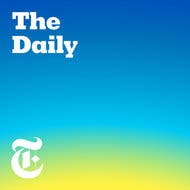
Listen to ‘The Daily’: Counting the Infected
How The Times got access to a federal database of 1.5 million coronavirus cases — and what it revealed.
After eagerly reopening, some churches have become a major source of coronavirus cases.
In May, President Trump declared places of worship part of an “essential service” and threatened, though it was uncertain he had the power to do so, to override any governor’s orders keeping them closed. Now new outbreaks of the coronavirus are raging through churches where services have resumed.
More than 650 coronavirus cases have been linked to nearly 40 churches and religious events across the United States since the beginning of the pandemic, with many of them erupting over the past month as Americans resumed their pre-pandemic activities.
The virus has struck churches that reopened cautiously with face masks and social distancing in the pews, as well as some that defied lockdowns and refused to heed new limits on numbers of worshipers.
In Texas, about 50 people contracted the virus after a pastor told congregants they could once again hug one another. In Florida, a teenage girl died last month after attending a party at her church.
Though thousands of churches, synagogues and mosques across the country have been meeting virtually or outside, the right to hold services within houses of worship has become a political battleground.
But as the virus rages through Texas, Arizona and other evangelical bastions in the South and the West, some churches that fought to reopen are closing again and grappling with whether it is even possible to worship together safely.
“Our churches have followed protocols — masks, go in one door and out the other, social distancing,” said Cynthia Fierro Harvey, a bishop with the United Methodist Church in Louisiana, where three churches closed again over the past week. “And still people have tested positive.”
Global roundup
The top U.K. financial official details plan to preserve and create new jobs.
The U.K. government’s top financial official announced a host of tax and spending measures on Wednesday to preserve and create jobs in Britain as the country anticipates a wave of layoffs caused by the pandemic.
Rishi Sunak, chancellor of the Exchequer, unveiled to Parliament a 30 billion pound ($37.7 billion) proposal that included tax cuts, employment coaching and even a 50 percent discount for diners who go to restaurants and pubs.
But he said Britain’s furlough program, which has paid up to 80 percent of the wages of 9.4 million workers since March, would end in October, as previously announced. Keeping it longer, he said, would provide “false hope” to workers. Instead, employers will receive £1,000 for each employee they bring back to work through January.
The proposal also aims to create green jobs by providing funding for vouchers for home-insulation and making public buildings more energy efficient.
In other news around the world:
-
China on Wednesday joined those criticizing the Trump administration’s decision to withdraw the United States from the World Health Organization. Zhao Lijian, a spokesman for China’s foreign ministry, said: “This practice of the United States undermines international anti-epidemic efforts, and in particular has grave implications for developing countries in urgent need of international support.”
-
Hong Kong has entered what one health official described as “a third wave” of coronavirus infections, a setback for a city where the Covid-19 death toll remains in the single digits. The health authorities reported 38 new cases on Tuesday and Wednesday, after months in which few or no new daily infections were detected. Most traceable clusters are linked to a nursing home and two restaurants.
-
Israeli Defense Minister Benny Gantz decided to quarantine after being exposed to a relative who later tested positive for Covid-19, his office said Wednesday. Mr. Gantz will continue to perform his duties from home.
-
Protesters in Serbia denounced a curfew that President Aleksandar Vucic said would “probably” go into effect over the weekend. Serbia reported its highest daily death toll on Tuesday, with 13 people dying overnight, and 299 new cases. The total case count for the country is about 16,000.
-
A New Zealand man who tested positive will face criminal charges after he sneaked out of a hotel quarantine site, the public broadcaster RNZ reported. He ventured out into central Auckland on Tuesday night for a little over an hour and visited a supermarket. RNZ called the escapade a “Covid-19 escape.”
Disney World draws excitement and incredulity as its reopening nears.
Walt Disney World in Orlando, Fla., will welcome back visitors on Saturday even as coronavirus cases in Florida remain high. In doing so Disney is stepping into a politicized debate surrounding the virus and efforts to keep people safe, where even the wearing of masks has become a point of contention.
On Wednesday, Florida reported more than 9,900 new cases, bringing the state’s total to 223,775 cases over the course of the pandemic.
Visiting Disney World will be different: Parades, fireworks and most indoor shows have been suspended. There will be no opportunities to hug any costumed characters. Fingerprint scanners will not be used at park entrances.
“Covid is here,” Josh D’Amaro, Disney’s theme park chairman, said. “We have a responsibility to figure out the best approach to safely operate in this new normal.”
The company has been posting marketing videos to highlight the safety procedures it has designed to protect visitors and employees.
“I feel safe because Disney has gone above and beyond what they needed to do,” an employee named Sam says in one of them while standing near Fantasyland.
Some of the 1,000-plus responses to that particular video were supportive. Others were incredulous: “You gotta be kidding,” wrote Alexander Jones, a Seattle motion graphics artist.
Reporting was contributed by Peter Baker, Brooks Barnes, Pam Belluck, Kate Conger, Michael Cooper, Jacey Fortin, Michael Gold, Peter S. Goodman, Erica L. Green, Anemona Hartocollis, Jack Healy, Mike Ives, Sapna Maheshwari, Iliana Magra, Tiffany May, Claire Moses, Andy Parsons, Adam Rasgon, Frances Robles, Alejandra Rosa, Eliza Shapiro, Natasha Singer, Mitch Smith, Megan Specia, Sheryl Gay Stolberg, Eileen Sullivan, Lucy Tompkins, Allyson Waller and Karen Zraick.
